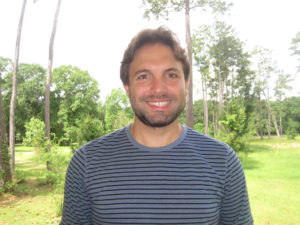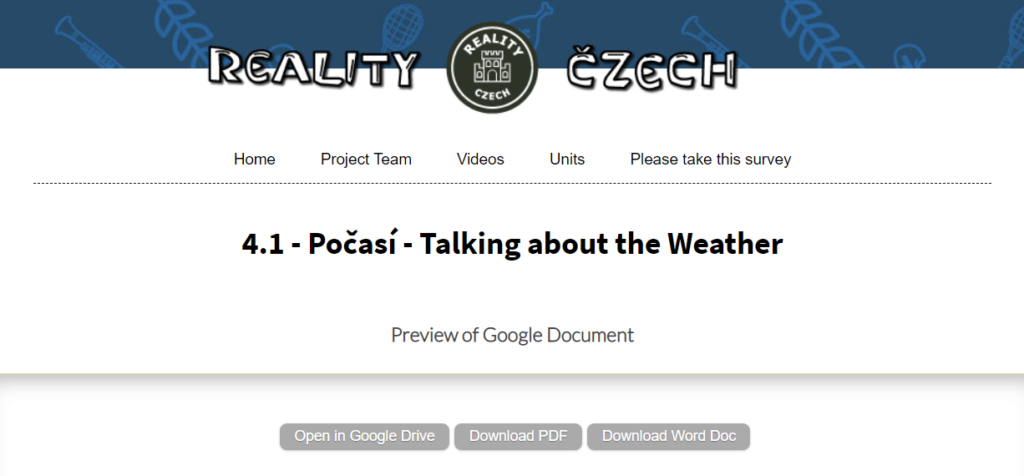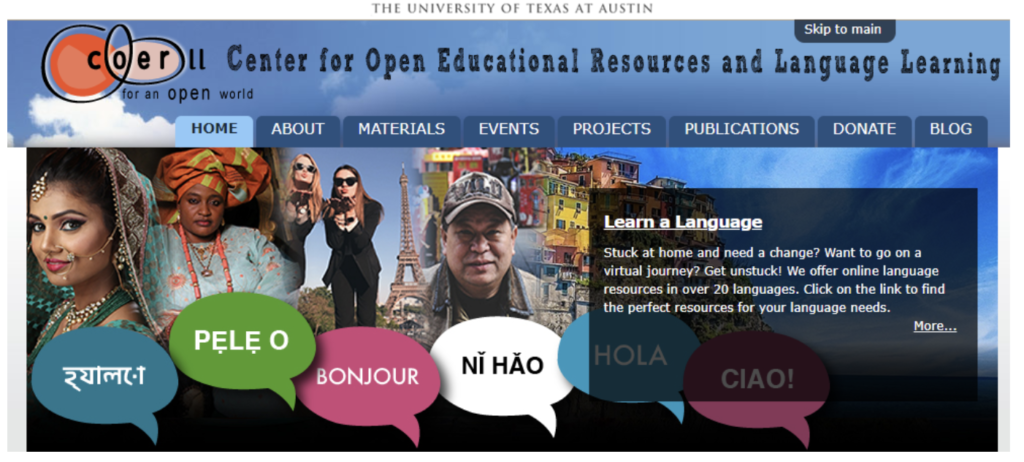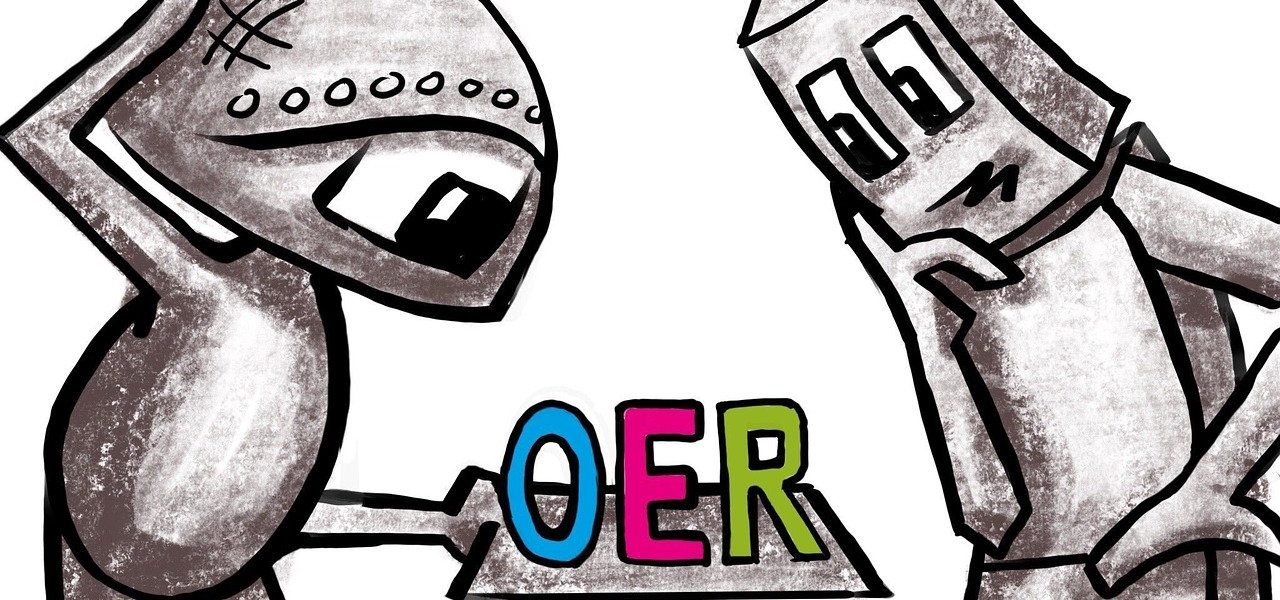Opportunities for Open Educational Resources Usage and Development During COVID-19
By Christian T. Hilchey, University of Texas
DOI: https://www.doi.org/10.69732/UEFZ7509

It already seems like an eternity ago that academic institutions were confronted with the reality of COVID-19 and the transition to remote instruction. Many of us rightly felt overwhelmed by the new teaching pressures, especially the challenges of delivering content that was not intended for online instruction. As we move forward and plan for the upcoming Fall 2020, which by all accounts will largely be delivered online, we are presented with an opportunity to modify our instructional materials in ways that not only contribute to our own courses in the upcoming semester(s), but also contribute to a shift in the overall learning ecology that will benefit our own students, students and instructors at other universities, and the public at large.
The major issue at stake is copyright and the limitations it places on our ability to legally share copyrighted materials, modify them, and in some cases even have reliable access to these materials. Copyright generally restricts us to possessing a single copy of the work in unaltered form. As an alternative, I will be discussing the benefits of Open Educational Resources (OER) and how you can find materials as well as immediately share some of your own materials to the benefit of others.
The advantages of Open Educational Resources are many, both in terms of the affordability – since they are available at no or low cost – as well as the affordances they offer us. Specifically, the traditionally cited 5 R’s, which allow us to retain, revise, remix, reuse, and redistribute content (see http://opencontent.org/definition/), allow instructors substantially more freedom in how they use materials and adapt them to their classroom. This is all possible because of Creative Commons Licenses, which allow materials to be shared and modified (with the exception of Creative Commons – No Derivatives license). Many different types of documents and media can be placed under a Creative Commons license, such as texts, photographs, drawings, songs, sound effects, slide presentations, and more. Depending on license compatibility, many of these resources can be combined together into larger works with your own original content (see Can I combine material under different Creative Commons licenses in my work? under the Creative Commons FAQ).
Additionally, the 5 R’s also help to break down access barriers to content at a time when textbook prices and affordability have become major concerns. Even prior to COVID-19, textbook costs had become a major issue for many students. According to the College Board, average estimated textbook costs for 2019-20 reached $1240. The pandemic has shined a spotlight on the need for accessible and affordable materials, as the financial toll of pricey textbooks can create barriers to access for those in tenuous financial circumstances. Sharing textbooks with friends, using a library copy, and other creative cost-savings strategies are no longer an option for many students. The current situation provides an opportunity for us to consider the benefits provided by Open Educational Resources (OER). As people’s well-being has been threatened by job loss, we need to be especially sensitive to vulnerable students whose access to course materials, and as a consequence their access to a college education, is threatened by financial concerns.
Finally, OER materials are typically digitally native, meaning they are ready to go to in our exclusively online classrooms. Elements of an OER can easily be shared on a screen. Oftentimes documents are editable and can be easily adapted to be turned in online through a learning management system (LMS). They can also be adapted to fit the particular needs of students, such as including extra information pertinent to a course, supplementing with information about current events, or excluding extraneous information not relevant to the curriculum. Additionally, students are able to access their materials from wherever they are. These all in principle sound great, but faculty may be unaware of the OER options available for their classes. So how do you find what is already out there? As a start I would recommend searching on OER Commons and the Open Textbook Library to see what exists in your subject area. Just a small amount of searching yields numerous results, from materials for more commonly taught languages like Spanish or French to less commonly taught languages such as Korean and Yorùbá. Moreover, these texts are often accompanied by reviews from colleagues at other institutions who have already successfully adopted these materials and integrated them into their curriculum.
More broadly, I see the current situation as an opportunity for us to embrace the tenets of OER and produce and release materials of our own to the wider community. I come to this topic as the author of a substantial OER project to create an entire 1st-year hybrid course for Czech, called Reality Czech, including textbook, activity book, grammar and culture readings, self-graded Canvas exercises, homework exercises, over 240 reality-style interview compilations, and much more. Materials for the first five chapters have been released onto the course website (https://realityczech.org) and the second five chapters are being released during summer 2020. The release of these materials is the culmination of almost six years of work during the academic year and summers conceptualizing and developing materials, finding and integrating openly licensed content into the curriculum, and testing materials and instructional strategies in my own classes.
While the timeliness of this upcoming release was unintended, it has gotten me thinking about how many of us have created our own materials, whether they are supplements to a textbook, grammar reviews, in-class activities, projects, etc. that could be shared with the larger community. After several years of work on the Reality Czech project, I can attest to the massive amount of work it takes to create a full suite of textbook materials for a year of foreign language instruction. I am under no illusion that instructors can create massive projects like this overnight. Instead, I would like to advocate for sharing small OER as a start to building a new learning ecology. Any material can be placed under an open license regardless of how large or small it is. These resources can be in the form of an assignment, in-class activity, or testing materials and they would immediately be useful to other instructors and can all be placed under an open license and freely shared.
It is in this vein that I would like to put forward several strategies for how even OER novices can become involved and create their own materials for sharing. After becoming acquainted with what OER materials have already been published, I would recommend reading about Creative Commons Licenses and what can be legally shared in an openly licensed work. In some instances, the materials you already have created may be ready for sharing. Some impediments (though by no means insurmountable) will exist for certain works. Copyrighted images, song lyrics, movie clips, literary texts, music videos, etc. cannot be part of an openly licensed work. While there are certain cases where fair use permits limited reuse of copyrighted materials, these cases are typically limited to using small amounts of these works in a transformative way. As an alternative, you can create or modify assignments based on a copyrighted work while not including copyrighted aspects of the work itself. Instead, a link can be provided which points to the copyrighted work (e.g. a link to the video on Youtube). Using openly licensed resources is the safest alternative because of the lack of restrictions on reuse and the certainty that creators have when using these materials about their rights and responsibilities.
Even if you are not thinking of embarking on the creation of an OER project, it is worthwhile to spend a little time looking at the sheer abundance of openly licensed images and videos available. According to the 2017 State of the Commons, over 1.4 billion works have been shared (and one would imagine quite a bit more in the three years that have passed since then). These media sources are a sort of “low-hanging fruit” that with minimum effort can be integrated into our lessons to create a more mediated language learning environment. The Reality Czech project has benefited from the millions of free images and other media resources available to use right away. The table below summarizes some of the ways you can find these resources:
Action |
Resources |
What OER already exist? |
https://www.oercommons.org/ |
Find Open Images |
https://images.google.com/ (select open images by going to Tools –> Usage Rights) |
Find Language / Culture Specific Images |
https://commons.wikimedia.org/ |
Attributions |
https://wiki.creativecommons.org/wiki/Best_practices_for_attribution |
Find Open Video |
https://www.youtube.com/ (after searching, click on filter and select Creative Commons)
https://vimeo.com/ (after searching, click on +more filters and select Creative Commons)
|
Open Educational Practices and the Future of the Language Textbook by Christian Hilchey, is licensed CC-BY 4.0
Content that you create can be marked with whichever Creative Commons License you wish, as long as it is compatible with any media and other resources you have utilized in your final product. As a matter of practicality, I would highly recommend the more open licenses such as Creative Commons Attribution (CC-BY) or Creative Commons Attribution-ShareAlike (CC-BY-SA). The first of these licenses only requires that anyone reusing or remixing this content provide attribution to the original source/author, while the second additionally requires that any modifications to these works also be placed under an identical ShareAlike license. These licenses do not present significant impediments to others wishing to make their own modifications to your content or integrate it into their own work in the same way as somewhat more restrictive licenses such as Creative Commons Attribution-NoDerivs (CC-BY-ND) or Attribution-NonCommercial (CC-BY-NC). These more restrictive licenses make it more difficult for others to modify or develop off of your content, since the terms of these licenses are either incompatible for remixing in general (CC-BY-ND and other combinations involving the No Derivatives stipulation) or for relicensing derivatives of the work (CC-BY-NC and other combinations involving the Non-Commercial stipulation). These more restrictive licenses greatly limit the power they have for fostering a community of creators. I strongly believe this should be our ultimate goal, since the more people that contribute to this new ecology, the more we will all benefit from sharing various resources.
The Reality Czech project has also greatly benefited from Google Docs and the freedom that they give to content creators to share their works more broadly. Google Docs can be shared with anyone by setting the share setting to allow anyone to access the document with just a link. The Reality Czech curriculum is built exclusively on Google Docs, with all content fed onto our WordPress site.

Buttons at the top of every page allow users to access any content on the website as a Google Doc, Word document, or PDF. However, sharing your content as Google Docs need not be that technologically complex. A single link to a shared folder on Drive or a single Doc can be shared on your faculty profile or personal website. Providing content in this manner can also help students complete and turn in their work. Part of the daily work in my 1st-year Czech classes involves a printable post-class homework assignment that requires students to use the language we practiced in more in-depth ways, often focusing more on the creative aspects of language. For years students have printed these assignments out and turned them in, but after spring break we were able to transition seamlessly to online submission of homework assignments with students making a copy of the Google Doc (File –> Make a Copy) and sharing it with me.
There are more formal routes for sharing content as well, and resources can be submitted to OER Commons and the Open Textbook Library or through other projects such as the FLLITE Project, which is sponsored by the Center for Educational Resources in Culture, Language and Literacy (University of Arizona) and Center for Open Educational Resources and Language Learning (University of Texas at Austin). These avenues deserve serious consideration for resources you wish to share, since they present the easiest path for other users to find your content.
This article has just skimmed the surface of OER, but I have tried to outline some of the basic points for someone with little to no knowledge of them. It is my hope that over the coming months more instructors will come to know OER and the advantages of using them. Even more so, I hope that these times will inspire others to embark on creating their own materials or sharing materials they have already created under an open license.

If you would like to learn more about OER, take a look at Introduction to OER created by COERLL at the University of Texas at Austin, where you can learn about all aspects of the OER process, from searching for resources, licensing, attributing resources you find, remixing and revising materials, creating your own materials, as well as publishing and sharing your own OER project. Additionally, you can earn digital badges through COERLL to demonstrate your accomplishments in one of six areas: OER Teacher, OER Master Teacher, OER Creator, OER Master Creator, OER Reviewer, or OER Ambassador. These badges then serve to recognize your own work with OER and demonstrate your success to colleagues, university administration, etc.



